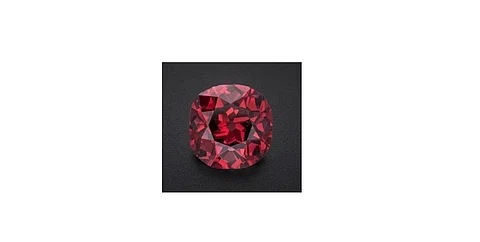

Weighing 2.33 carats and possessing the coveted GIA color grade of “Fancy red,” the Winston Red is the fifth-largest diamond of its kind known to exist — and the only one currently on public view. The diamond is the highlight of a new exhibition of fancy color diamonds in the museum’s Winston Gallery, where it shares the spotlight with 40 other exquisite gems from the Winston Fancy Color Diamond Collection.
The diamond was recently examined by scientists from the Gemological Institute of America (GIA), in partnership with experts from the Smithsonian and the Paris School of Mines. The team conducted an in-depth analysis to unravel the secrets behind the gem’s striking color and origin.
“The Winston Red diamond is one of the most exquisite gems on earth,” said Susan Jacques, president and CEO of GIA. “With fewer than two dozen pure red diamonds over one carat recorded, this stone represents a significant scientific and natural rarity. Studying it marks a milestone for GIA.”
Red diamonds are considered the rarest of all colored diamonds, making up just 0.07% of over a million colored diamonds analyzed by GIA. Of those, only a fraction receive the prestigious “Fancy red” classification.
Dr. Ulrika D’Haenens-Johansson, senior manager of diamond research at GIA, described the gem’s intense hue as the result of plastic deformation — a stress-induced change in the crystal structure during the diamond’s formation deep within the earth. “It’s as if the diamond was squeezed and is now intensely blushing,” she explained. “The Winston Red tells a story of immense geological pressure and time.”
GIA executive vice president Tom Moses, who first encountered the stone in 1987, called it “unforgettable,” highlighting its old mine cut, vibrant red hue, and historical significance. According to records, the diamond was sold in 1938 by famed jeweller Jacques Cartier to the Maharaja of Nawanagar, an Indian royal known for his opulent taste in gems.
The Winston Red and its companion collection were donated to the Smithsonian by Ronald Winston, son of legendary jeweller Harry Winston. Dr. Gabriela A. Farfan, curator of gems and minerals at the museum, called the donation “one of the most significant in recent decades.”
“The exhibit was inspired by a symphony,” Dr. Farfan added. “The Winston Red acts as the conductor, guiding a rainbow of other fancy color diamonds.”
A scientific article detailing the team’s findings will be published this spring in Gems & Gemology, GIA’s peer-reviewed journal. The lead authors include Dr. Farfan and Dr. D’Haenens-Johansson, along with researchers from GIA, the Smithsonian, and the Paris School of Mines.
The new exhibition opened April 1 and invites the public to witness the rare beauty and natural wonder of the Winston Red — a gem as mysterious as it is magnificent.
